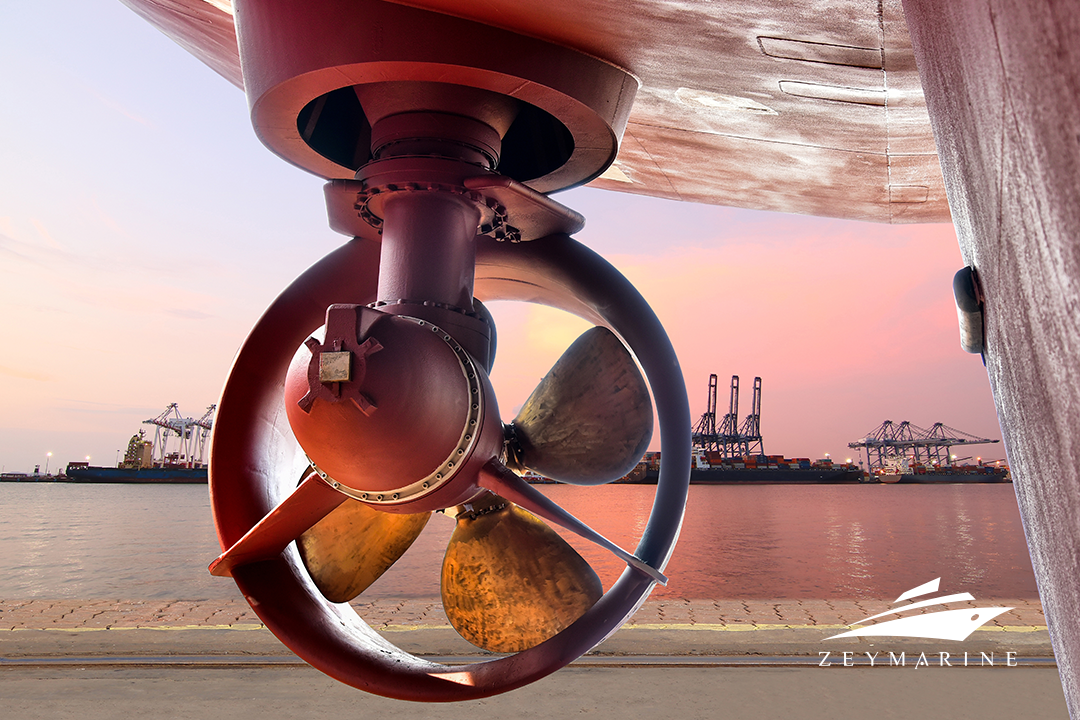Efficiency is a paramount consideration in the maritime industry, and the marine propeller plays a crucial role in a ship’s performance and fuel consumption. Shipowners and operators are constantly striving to find the most efficient propeller designs that can maximize thrust while minimizing energy losses. Several factors influence ship propeller efficiency, including blade design, material selection, diameter-to-pitch ratio, and rotational speed. These factors collectively determine the propeller’s ability to propel the ship forward while minimizing fuel consumption and vibrations.
- Fixed-Pitch Propellers
Propeller efficiency refers to the ability of a ship’s propeller to convert engine power into thrust with minimal energy losses. Several factors influence Ship propeller efficiency, including blade design, material selection, diameter-to-pitch ratio, and rotational speed. These factors collectively determine the propeller’s ability to propel the ship forward while minimizing fuel consumption and vibrations.
- Controllable Pitch Propellers
The key advantage of CPPs lies in their ability to optimize the blade angle to match the operating conditions. By adjusting the blade angle, the propeller can maintain optimal efficiency at various speeds and loads. For instance, when the ship is sailing at low speeds, the blade angle can be set to a higher pitch, allowing for efficient propulsion with reduced fuel consumption. Conversely, at higher speeds, the blade angle can be adjusted to a lower pitch, maximizing thrust without excessive energy losses.
The flexibility of CPPs also plays a crucial role in improving maneuverability. The ability to change the blade angle quickly enables the ship to respond promptly to changing sea conditions, such as strong currents or gusty winds. This feature is particularly advantageous for vessels that require precise control, such as offshore supply vessels, cruise ships, and naval vessels.
Additionally, CPPs provide a significant safety advantage. In the event of an engine failure or a need for emergency stops, the pitch of the blades can be adjusted to generate reverse thrust, allowing the ship to slow down or stop more effectively. This capability enhances the ship’s maneuvering capabilities during critical situations, reducing the risk of collisions or accidents.
CPPs have been widely adopted in various maritime sectors due to their efficiency and versatility. They are commonly found in applications such as container ships, tankers, passenger vessels, and high-performance yachts. The ability to fine-tune the propeller’s performance according to specific vessel requirements has made CPPs an attractive choice for shipowners and operators seeking to optimize fuel consumption and enhance operational efficiency.
- High-Efficiency Propeller Designs
In recent years, advancements in propeller design have led to the development of highly efficient propellers. One such design is the Kappel propeller, which features a unique blade shape that reduces energy losses and improves thrust efficiency. The Kappel propeller’s twisted blade design minimizes cavitation and reduces wake fraction, resulting in improved propulsive efficiency. These propellers are often used in vessels that operate at high speeds, such as container ships and tankers.
Another notable design is the skewed propeller, where the blades are twisted to reduce the generation of eddies and increase propulsive efficiency. Skewed propellers are particularly effective in reducing resistance and improving efficiency in vessels that operate at low speeds.
- Ducted Propellers
Ducted propellers, also known as Kort nozzles, are another type of propeller design known for their efficiency. These propellers consist of a cylindrical duct surrounding the propeller, which enhances thrust by accelerating the flow of water through the propeller. Ducted propellers are particularly effective in vessels that operate at low speeds or in confined spaces, such as tugboats and ferries. They offer improved maneuverability and increased propulsive efficiency, resulting in reduced fuel consumption.
- Contra-Rotating Propellers (CRP)
Contra-rotating propellers (CRP) systems utilize two counter-rotating propellers on the same shaft. This design provides improved thrust efficiency and maneuverability compared to traditional single-propeller systems. By utilizing two propellers rotating in opposite directions, CRP systems can recover rotational losses and generate higher propulsive efficiency. CRP systems are commonly used in propulsion systems for high-speed vessels, such as naval ships and fast ferries.
Efficiency is a critical aspect of ship propulsion, and the choice of a propeller greatly influences a vessel’s performance and fuel consumption. While fixed-pitch propellers are commonly used, controllable pitch propellers, high-efficiency propeller designs like the Kappel propeller and skewed propellers, ducted propellers, and contra-rotating propellers offer enhanced efficiency and performance.
As technology continues to advance, we can expect further innovations in propeller design, materials, and control systems, leading to even greater efficiency gains. The maritime industry’s commitment to sustainability and environmental responsibility will drive the development of propellers that minimize fuel consumption and emissions while maximizing performance.
By embracing these efficient propeller designs and incorporating cutting-edge technologies, shipowners and operators can propel their vessels into a greener and more efficient future, benefiting both their bottom line and the environment. The continuous pursuit of propeller efficiency will contribute to a sustainable and thriving maritime industry, where vessels operate with optimal performance, reduced fuel consumption, and minimized environmental impact.


